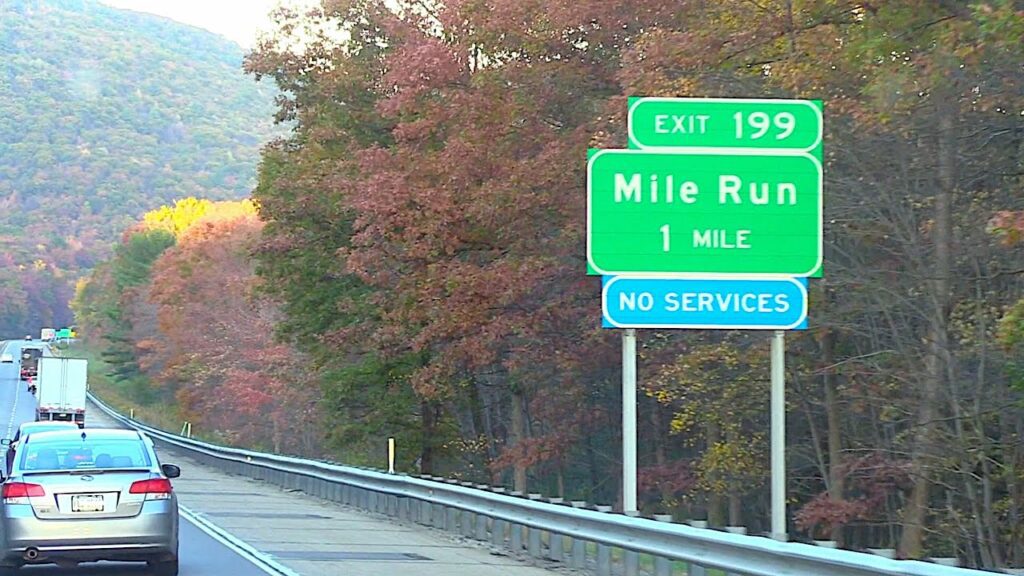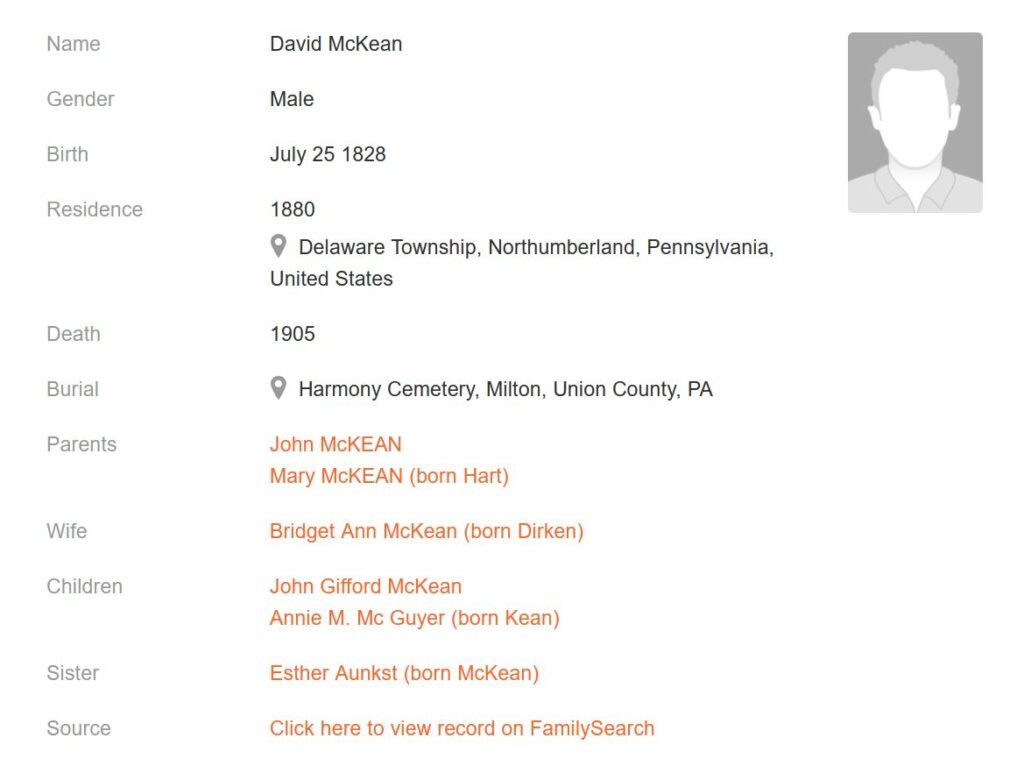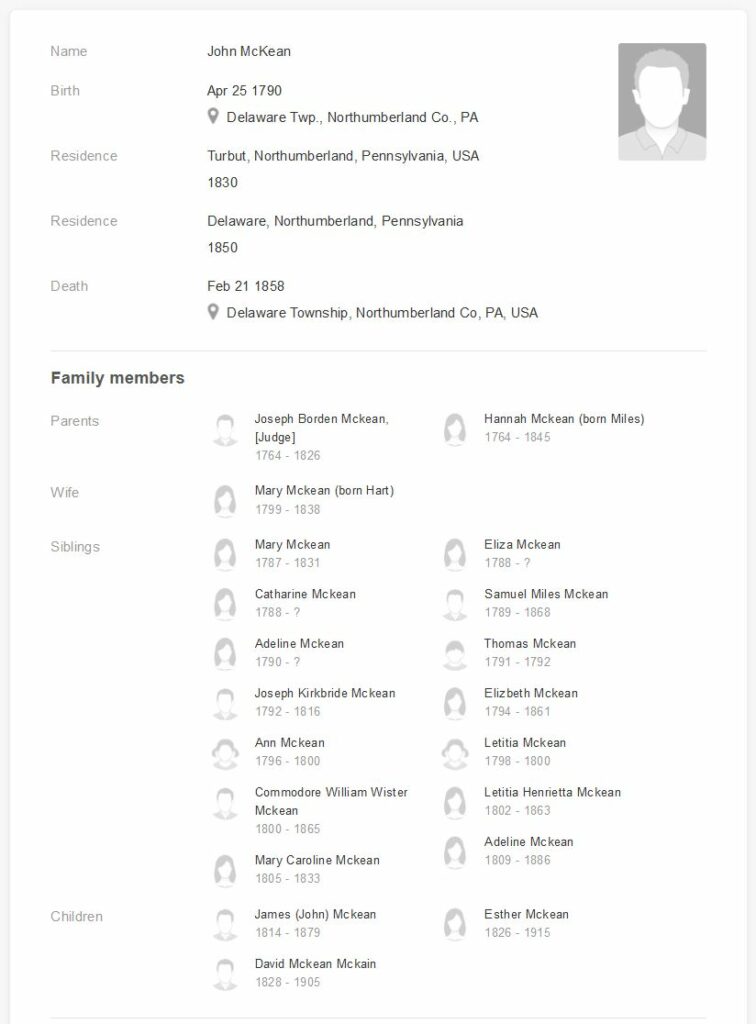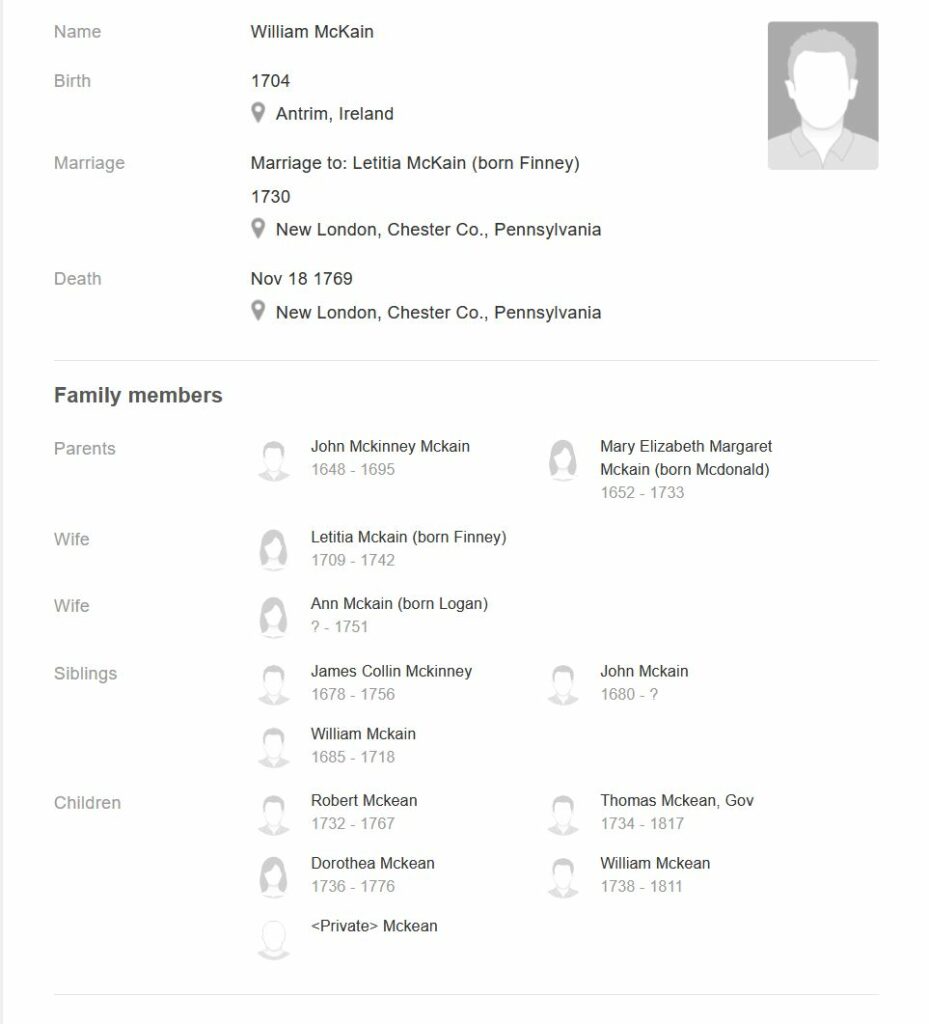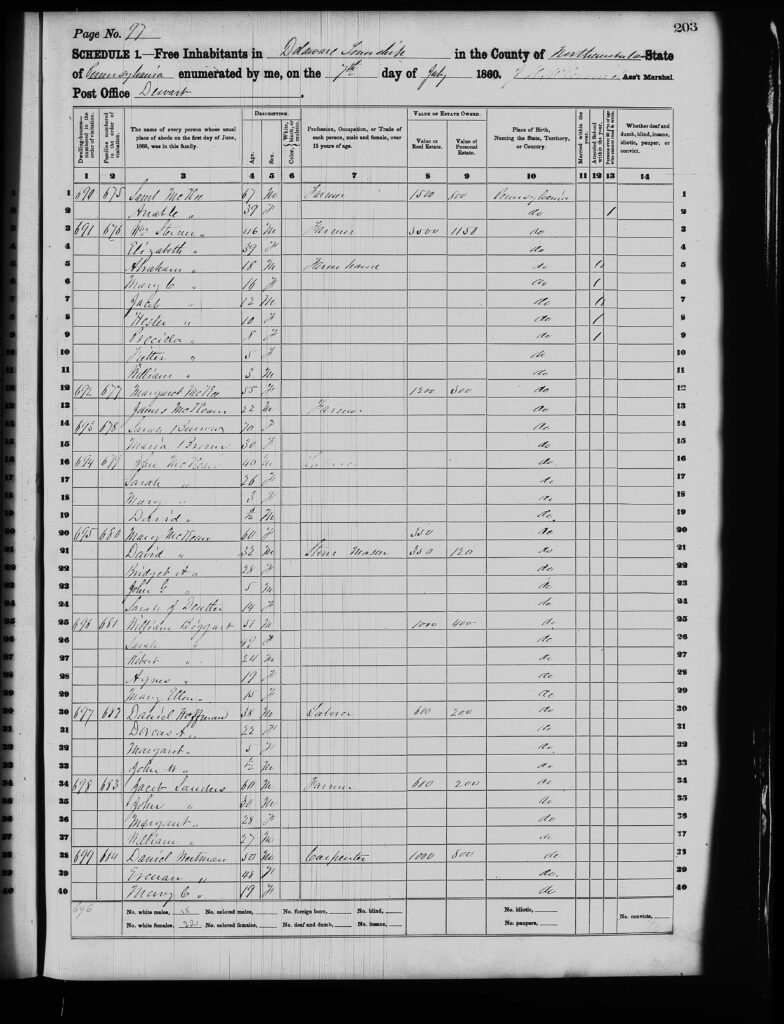Our latest episode can be found here: https://open.spotify.com/episode/7Da3aTnRjKuI0CMHJwETpg?si=2449a22476984de4
You can read more details below. Hope you enjoy thisdeep dive into a local ghost story.
The Ghost of White Deer Pike
Europeans first settled Pennsylvania in the 1600s, and the region was home to many Native American tribes with their own belief systems. Many of the interesting legends we have today are thanks to the varied backgrounds of the pioneers who made the territory their home and ultimately established our unique culture that is found nowhere else in the world. Pennsylvania was also one of the original 13 colonies and played key roles in both the Revolutionary and Civil Wars, so it’s no surprise that our state is rich with unique and fascinating folklore. But is there any truth to them? We believe that every good and lasting tale must have at least some truth to it. Here is one we want to share.
The singular appearance of a white deer in one of the most beautiful watersheds of present-day Union County was a wonder to the valley’s earliest settlers who came in 1770. But the Native Americans who dwelled in this region since long before were excited- considering it a prophetic sign from their great spirit; an omen of a significant event that would change their lives.
However, to the settlers, the albino deer was a coveted trophy, and when it was finally slain, many trekked miles to see it. The deer’s appearance created such commotion that the small stream along which the deer was shot has since been known as White Deer Creek, and the valley through which the creek runs is known as White Deer Valley. For decades after, the animal was reported to be the only white deer ever seen in the valley until two were spotted by a local hunter in 1850. Since this time, no other white deer have been seen in the valley, but another “white ghost” shows her presence occasionally and perhaps laments the disappearance of the animals she once considered kindred spirits.
White Deer Valley starts in the mountains south of Loganton, passes through the McCalls Dam State Park region, and ends just south of the cut in the mountains where White Deer Creek passes through on its journey towards the modern-day Interstate 80. The stream flows the entire length of the White Deer Valley and then parallels the interstate until it empties into the West Branch of the Susquehanna River at the town of White Deer. Despite the interstate, White Deer Valley remains mostly an unspoiled wilderness. The region has the unique privilege of having the only Interstate 80 exit in Pennsylvania with no facilities nearby.
Every state has haunted highways, and Pennsylvania is no different. From phantom hitchhikers to spectral vehicles to gravity hills, there are many miles of highway that are supposedly haunted. White Deer Pike – also known as State Route 1010 and the Sugar Valley Narrows Road – is supposedly one of those roads if the tale is true.
In researching Pennsylvanian folklore, we stumbled upon a legend that comes from White Deer Valley. Originally penned in the late 1800’s by folklorist Henry Shoemaker, “The Ghost Walk” records a haunting involving a man he refers to as Daniel McKean who, in 1846, moved to White Deer Valley with his parents and brothers.
The McKean’s cleared the forested land and erected a house and barn along White Deer Creek. When clearing the ground around the homestead, they allowed two gigantic white pines to remain standing at the front of the barn to provide shade for the animals using the water trough. Everything seemed to go well for the family as they farmed the lands in the remote valley.
However, life took an interesting turn for the McKean’s one evening when the sheep did not return from the pasture. Daniel was sent out to find the missing animals. By the time he found the animals, returned them to the barn, and stabled his mount, it was around eleven o’clock.
Daniel closed the barn doors and turning towards the house, was stunned at the sight before his eyes. In the area between the two large pines was a ball of light that looked as if it were dancing. As it bounced between the trees, the ball elongated and grew larger until it transformed into a young woman of great beauty. Their eyes met and Daniel instantly fell in love with the ghostly enchantress. Time stood still as he was arrested by the vision of beauty. Then, the beautiful maiden reached out and touched one of the trees, instantly turned back into a ball of light and disappeared.
The next night Daniel slipped out of the house and was once again treated to the same vision. This went on for some time until his father demanded to know exactly what Daniel was doing. Shoemaker does not record why his father demanded this. Maybe Daniel was caught sneaking out, or maybe his work ethic disappeared. Regardless, his father finally confronted Daniel about his mysterious night wanderings.
That night Daniel was accompanied by his father to the area where Daniel had been watching this spectral beauty. Daniel’s father never spoke about what he did or did not see that night, but the next morning, despite Daniel’s protests, the two pine trees were cut down and burned.
For weeks after, the two stumps dripped a strange red sap that looked like blood. Daniel never married, as his heart belonged to the ghostly woman. Daniel’s brothers eventually moved on, found their own homes, moved west, and started families.
When his parents passed on, the land was left to Daniel, who remained in the old farmhouse. People would see him sitting near the old, rotted stumps talking to himself, hoping to see his lovely maiden again.
We first stumbled across this tale on a blog written by adventurist and folklore lover, Norman Houser who writes about his ventures on the “Pennsylvania Rambler.” This story was also documented by Shoemaker’s successor Jeffrey Frazier in his book “Pennsylvania Fireside Ghost Tales.” Both included a modern-day twist that happened to friends of Houser’s. Norman had been told this story prior to ever hearing Henry Shoemaker’s tale, and was surprised by the number of similarities, which may lend credence to the original tale. It goes like this:
“I went to college with Frank and his wife, Heather. We had several classes together, and while doing a project for a literature class, discovered that we all were interested in ghost stories and folklore. We would share ghost stories, but we rarely spoke about personal experiences.
“Have you ever seen a ghost?” Heather asked one evening. The statement came seemingly out of nowhere and immediately caught my attention. Frank tried pushing it aside, but I was interested. After a little prying they conveyed the tale that occurred in the autumn of 1995, a couple weeks before they shared their story with me.
They were headed home for the weekend and due to various reasons, they did not leave Lock Haven until it was getting dark. “It was around eight, nine at night when we left,” Heather recalled. They were nearing the Mile Run exit on Interstate 80 when they came to a halt due to traffic, which was lined up as far as they could see. “For an unknown reason the traffic just sat there,” Heather would recall. “We decided to get off and take the side road that paralleled the interstate.” This side road would be White Deer Pike.
As they drove along, both thought it was strange that no other vehicles got off at this exit, especially seeing that the traffic was barely moving. They had traveled just a short distance when they saw her standing along road.
The short distance, according to Frank was roughly a mile. “We got off the exit and turned left. We crossed over a bridge and then we went down a hill. It was in that area where we spotted her.”
They described her as beautiful young woman, about twenty years old and blondish hair. She wore what appeared to be a flowing white-tinged, translucent wrapping that did little to hide her natural beauty. “She might as well have been naked,” Frank laughed causing Heather to give him a cold stare. “You saw everything.”
The figure was standing along the edge of the road when they passed her. “She was standing along the right side of the road. I mean right on the edge. I had to swerve into the other lane to avoid hitting her.” Not sure what they had just seen, they found a place about half a mile past her where they could safely turn the car around.
The figure was still standing there when they returned. Frank and Heather described a young woman with long, flowing hair. They both agreed that she appeared to be solid and seemed to shine in the car’s headlights. Though she never moved her clothing flapped wildly in the air as if caught in a strong wind. Looking at her, the detail both would later remember were her eyes. “They were sad eyes,” Frank remembered. Heather agreed.
“It’s funny,” Frank stated. “It has been twenty some years and I still remember the sadness in those eyes. I can’t remember what I did yesterday, but those eyes.”
The words Heather spoke next summed up their experience: “She turned into a ball of light and zipped off through the woods.” In an instant the woman who had been standing there shrunk into a small ball of light and flew over White Deer Creek and disappeared southward into the woods – all in a matter of seconds.
Frank and Heather sat there for a couple of seconds (though they said it felt like a long time) before they decided to get out of the area. They quickly turned around and drove as fast as they could to place some distance between them and what they had just witnessed.
The sincerity in their voices that evening told me they experienced something they could not explain. “It has stuck with us,” Frank said. “We never drove that stretch of interstate ever again in the dark. If it was getting dark when we wanted to leave Lock Haven, we just waited until the next day. It made Heather happier because she never liked driving past that spot after that night. Honestly, I don’t blame her. I’d never drive through the area in the dark again.”
In looking at these two accounts, here are some striking similarities:
- Both events took place along White Deer Creek and Frank and Heather’s sighting was not very far from where Henry Shoemaker claimed Daniel’s ghost story happened in 1846.
- Both ghosts were described as beautiful women.
- Both turned into a ball of light.
Could this possibly be the same spirit? Moreover, could the original tale conveyed by Henry Shoemaker be factual? This seemed like a great opportunity to do a deep dive into a local ghost story.
We began our research by reaching out to Norman Houser and Jefferey Frazier. Since Shoemaker was known to practice narrative license when writing, and he admits to having slightly altered the name of Daniel McKean in his tale, we felt it would be good to get some expert advice on Shoemaker’s writing style and what he would have altered regarding the character’s name. Both Norman and Jeffrey felt that Shoemaker would most likely have altered his last name.
So here is where our journey began – finding a Daniel with a last name similar to McKean -McKain, McKay, McCallum, McCauley, McCall… or any number of Scotch-Irish “Mc” last names that lived in the White Deer Valley and would have been in his mid to late teens in 1846. We started at the Union County Library digging through their county history books and historical archives. So much information about the history of towns and some notable families, but no one that matched our Daniel character.
Unwilling to admit defeat here we dug deeper. Using an ancestry site and working with the Union County Historical Society, we focused on the Scotch- Irish families that lived in the White Deer Valley region with similar last names from the 1820’s – the 1850’s. Again, no Daniel. There were a few records that appeared promising but resulted in nothing concrete.
Then we found an awesome nugget of information. In the electronic files of Penn State University’s library archives, there exists a first edition copy of the original Pennsylvania Mountain Stories written by Henry Shoemaker and published in 1907. A copy of the document will be attached in our blog. In the original telling of “The Ghost Walk,” found on page 64, Shoemaker writes that the young man’s name is Silas McKean.
The original copy can be found here: https://books.google.com/books?id=yGQ6AQAAMAAJ&printsec=frontcover#v=onepage&q&f=false
While Shoemaker still claims that the name is slightly altered, it made us think where did “Daniel” come from? We have a later publication of Shoemakers stories, and in that copy the character is listed as “Daniel”. So, this raised the following questions:
- Was Daniel truly the altered name (replacing Silas) and the last name is accurate?
- Was Silas the altered name, replacing Daniel, and the last name is accurate?
- Were both Silas and Danial altered names for the actual individual and the last name is accurate?
- Were both the first and last name slightly altered but close to the original?
At this point we proceeded to search with what we knew was factual:
- That the family settled in White Deer Valley in 1846
- That “Silas/Daniel McKean” would live out the remainder of his life in that area and, according to the story, be considered an old man
- That the family was of Scotch-Irish decent and farmers
Moving forward with this, we found the following individual via an ancestry site:
No Silas’ or Daniels still, but a David McKean (also recorded as David McKain) was born in Delaware Township, Northumberland County on July 25, 1828, making him approximately 18 years old at the time of the story in 1846. David was the son of John McKean, who is listed on an 1830 census as residing in Turbot Township, Northumberland, PA (just below Delaware township). In 1850, however, census records have John residing within Delaware township.
David’s great-great grandfather was William McKain who was a Scotch-Irish settler coming from Atrium Ireland to New London, PA in 1704. It appears that his children adopted the Irish spelling of their surname – McKean and dropped the Scottish spelling McKain. While I could not find any occupational records for him, David’s father was born April 25, 1790, and passed away on February 21, 1858, making him present for the events of 1846 and 68 years old at the time of his death.
In 1860, a census record for Northumberland County shows David along with his mother, Mary, brother, John, and sister, Elizabeth, as still residing in Delaware township. No father is listed-, matching the death record of John Sr. An 1890 census also confirms David’s residency in the same location. He died on June 7, 1905, at age 76 and is buried in Milton, Pennsylvania.
There are a few details about David’s life that depart from the story, but don’t necessarily eliminate him as a fit for the actual person the tale is about.
- David has a record of military service in the Civil War from 1864-1865. This is not surprising, as most men his age would have been enlisted in the war.
- David did marry and have children, although we could not find a concrete date for the marriage. He married Bridget Ann Dirken, who passed away around 1900 (we found dates for both 1900 and 1902). They had 3 children, John, Anna, and Andrew. The eldest child, John, was born in 1855. This does not seem odd to us, as he would have been expected to marry and carry on the family name through his children. With his first child being born in 1855, a decent window is given for him to pine away for his ghostly love. Also, marriages in this time were still not always for love, and often arranged.
- There is a period that he may, or may not have, resided out in Lakeland, Minnesota (1880) and Thatcher Nebraska (1885). We found only one genealogy site that lists him as residing in these places, but all have him located in Delaware township by the 1890 census. We also traced several members/branches of the McKain/McKean family to the Midwest throughout the 1800’s. This ties in with the tale, in that the main character’s siblings move out west, but it does not state that “Daniel” also resided out west. In this era, it would not be uncommon for family to visit and stay for extended periods.
- Henry Shoemaker’s tales were published in 1907, while David passed in 1905. However, the original recording of the “Ghost Walk” occurred in 1898. We know this because in his opening paragraph, Shoemaker states that the events occurred “fifty-two years ago.”
- All the records have David as residing in Delaware Township, Northumberland PA, not in Union County or White Deer.
The most glaring issue seems to be this fourth issue- Delaware township, which is very close to White Deer, and absolutely part of White Deer Valley, but not close enough to the Mile Run exit and Sugar Valley Narrows of where the ghost was seen in 1995 on White Deer Pike, to convince us that this is the individual from the legend. Since it was so close, we dove into some more research about the history of Union and Northumberland counties. What we found eliminated any doubt.
Currently, White Deer Township is bordered by Lycoming County and Gregg Township to the north, the West Branch Susquehanna River to the east, over which lies Northumberland County, Kelly, and Buffalo Townships to the south and West Buffalo Township to the west. Within White Deer Township are the unincorporated communities of White Deer and New Columbia, plus a portion of West Milton. Delaware township’s borders lie just below Montgomery, PA at the north and just above New Colombia at the south. Its western border includes the Susquehanna River on which the town of White Deer sits. While White Deer and New Columbia are solidly in Union County, Milton is part of Northumberland County. At one time these towns, and all of Union and Columbia Counties were part of Northumberland County.
Northumberland County was established in 1772, and once extended from the Lehigh River to the Allegheny River, with New York State as its northern border. Alone, Northumberland County encompassed 1/3 of the state. However, increasing populations led to the formation of Union and Columbia Counties in 1813. These counties were carved out of Northumberland County and there are records of residents being extremely dissatisfied with the dismemberment – even opposing the division into the mid and late 1800’s.
In addition, White Deer township was (and is still) unincorporated, meaning the census location for those living in this area would have been another nearby town. Today that is possibly New Columbia or West Milton, but at the time David McKean was living, and at the time of this story, those parameters were likely blurred. It seems plausible that, due to the history of the area and the proximity of the townships, he and his family could have been living on a farm in the White Deer Valley near the Sugar Valley Narrows where White Deer Pike currently runs through, and still be on a census for Delaware Township.
We shared our findings with both Jeffrey Frazier and Norman Houser, and they concurred we have likely found “Daniel / Silas” McKean.
We have not been able to find any other accounts of individuals seeing this beautiful apparition. Undoubtedly, many have tried to see the same ghost, turning off I-80 at the Mile Run exit after dark and headed eastward on White Deer Pike. In what we’ve found, she’s never appeared. Perhaps she’s satisfied that her story is being shared. Nonetheless, her name, apparent tragedy, and the location of her earthly remains are as much of a mystery as when McKean first became enamored with her.
If you happen to travel I-80 at night and decide to take the Mile Run exit, traveling along White Deer Pike through the Sugar Valley Narrows, be sure you keep your eyes open – maybe you too will spot the lovely maiden. And if you do, be sure to let us know.

